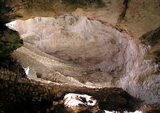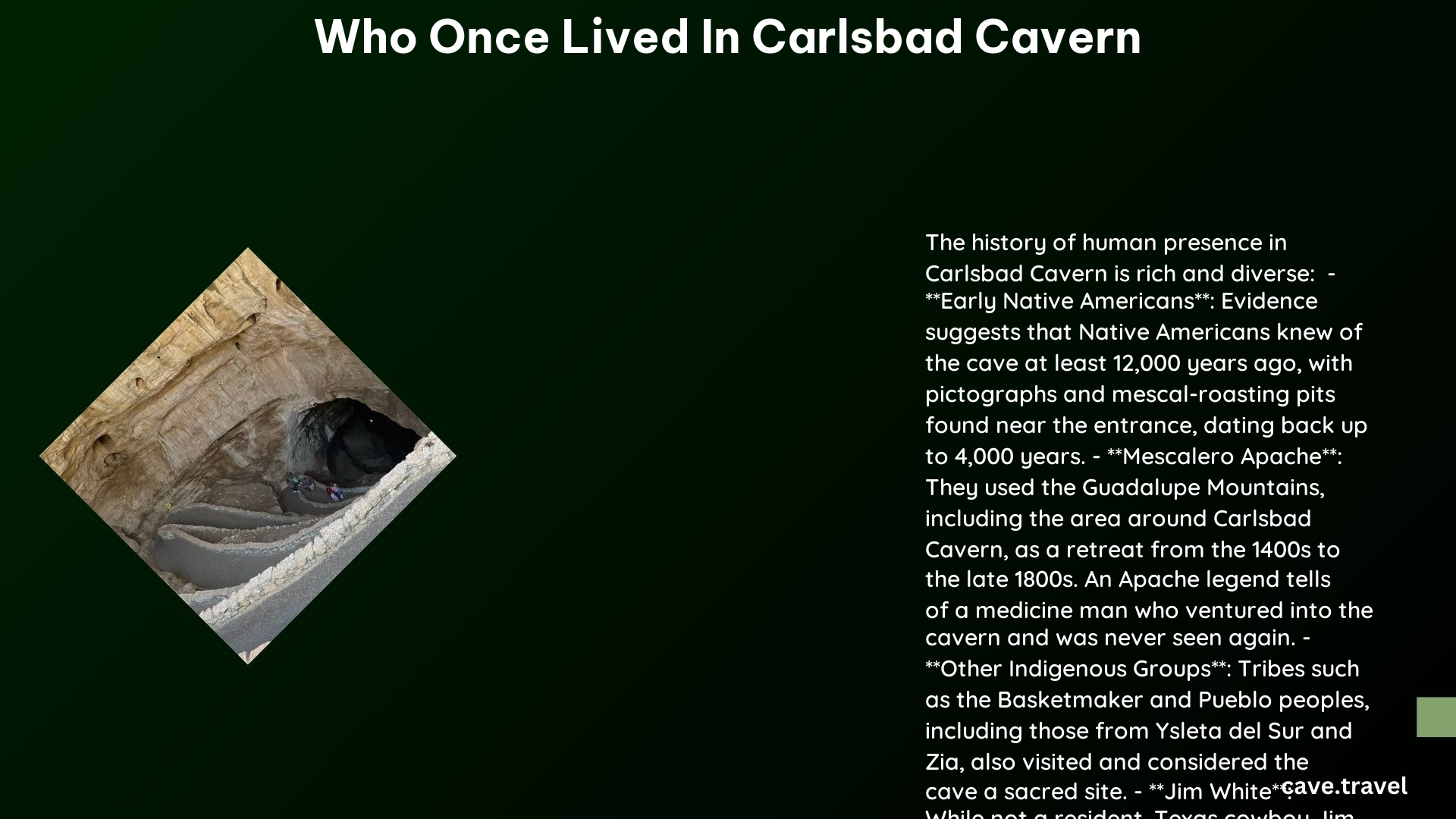Carlsbad Cavern, a natural wonder in New Mexico, has a rich history of human habitation dating back thousands of years. Native American tribes, including the Mescalero Apache and Zuni Pueblo, were familiar with the cave and its surroundings. Archaeological evidence suggests that Basketmakers, early hunter-gatherers, lived in the area around 4000 years ago. The cave and its vicinity have been home to various prehistoric and historic inhabitants, leaving behind a legacy of artifacts, pictographs, and cultural significance.
Who Were the Earliest Known Inhabitants of Carlsbad Cavern?

The earliest known inhabitants of the Carlsbad Cavern area were prehistoric nomadic tribes who roamed the Guadalupe Mountains as far back as 12,000 to 14,000 years ago. These early humans were likely hunter-gatherers who utilized the natural resources of the region for survival. Among the earliest identifiable groups were the Basketmakers, who lived in the area approximately 4000 years ago.
Characteristics of the Basketmakers:
- Hunter-gatherer lifestyle
- Utilized caves for shelter
- Created distinctive basketry (hence their name)
- Left behind pictographs and cooking ring sites
- Shared cultural traits with the Anasazi of the Four Corners area
What Native American Tribes Were Associated with Carlsbad Cavern?

Several Native American tribes have been associated with Carlsbad Cavern throughout history. The most prominent among these were:
- Mescalero Apache
- Zuni Pueblo
- Apache (various bands)
- Comanche
How Did These Tribes Interact with the Cave?
The Mescalero Apache and Zuni Pueblo had specific names for Carlsbad Cavern:
| Tribe | Name for Carlsbad Cavern | Meaning |
|---|---|---|
| Mescalero Apache | Jadnut?udebiga | Home of the Bat |
| Zuni Pueblo | Asho:sti an alaluckwa | Bat Cave |
While there’s no evidence of deep cave exploration by these tribes, they were aware of its existence and utilized the area around the entrance for various activities, including:
- Cooking (evidenced by mescal cooking pits)
- Shelter
- Possibly ceremonial purposes
What Archaeological Evidence Exists of Past Inhabitants?
Archaeological studies have uncovered significant evidence of past inhabitants in and around Carlsbad Cavern. These findings include:
- Pictographs
- Located on the south wall of the cave entrance
- Created using red ocher
-
Attributed to Basketmakers and other early Native American groups
-
Cooking Rings
- Found near the natural entrance of the cave
-
Indicate food preparation activities
-
Skeletal Remains
- Extinct ground sloth remains discovered in the cave
-
Other animal remains, suggesting occasional animal entry over centuries
-
Cultural Artifacts
- Approximately one million artifacts preserved in the park museum
- Represent both prehistoric and historic American Indian occupations
How Did the Inhabitant Groups Change Over Time?
The inhabitant groups of the Carlsbad Cavern area evolved over thousands of years:
- Early Nomadic Tribes (12,000-14,000 years ago)
- Roamed the Guadalupe Mountains
-
Left minimal archaeological evidence
-
Basketmakers (circa 4000 years ago)
- Established a more consistent presence in the area
-
Developed distinctive cultural practices
-
Apache Arrival (around 1300 AD)
- Influenced the region significantly
-
Mescalero and Lipan bands settled in the area
-
Comanche Influence
- Pushed Apache groups north and west
- Altered the regional power dynamics
What Cultural Adaptations Did These Inhabitants Develop?
The inhabitants of the Carlsbad Cavern area developed various cultural adaptations to survive in the harsh Chihuahuan Desert environment:
- Hunter-Gatherer Lifestyle
- Maintained by Basketmakers and other early groups
-
Allowed for flexibility in resource acquisition
-
Cave Utilization
- Used caves for shelter from extreme weather
-
Possibly for ceremonial or spiritual purposes
-
Resource Management
-
Developed techniques for harvesting and preparing local plants (e.g., mescal cooking pits)
-
Cultural Practices
- Created distinctive art forms (pictographs)
-
Developed unique tools and artifacts
-
Social Organization
- Remained in smaller, mobile groups unlike other Pueblo societies that developed more complex, agricultural-based communities
How Has the Park Preserved the Legacy of These Past Inhabitants?
Carlsbad Caverns National Park has taken several steps to preserve and honor the legacy of its past inhabitants:
- Artifact Preservation
- Maintains a museum with approximately one million cultural resource artifacts
-
Implements strict preservation and protection protocols
-
Archaeological Research
- Conducts ongoing studies to uncover and understand the area’s history
-
Collaborates with experts to interpret findings
-
Educational Programs
- Offers visitors information about the park’s cultural history
-
Provides interpretive displays and guided tours
-
Cultural Respect
- Works with Native American tribes to ensure respectful treatment of sacred sites and artifacts
- Incorporates indigenous perspectives in park narratives
By preserving these cultural resources and educating visitors, Carlsbad Caverns National Park ensures that the legacy of those who once lived in and around the cavern continues to be recognized and respected.
References:
– https://www.nps.gov/cave/blogs/jim-white-cave-explorer.htm
– https://www.nps.gov/cave/learn/historyculture/index.htm
– https://www.gutenberg.org/files/52971/52971-h/52971-h.htm
